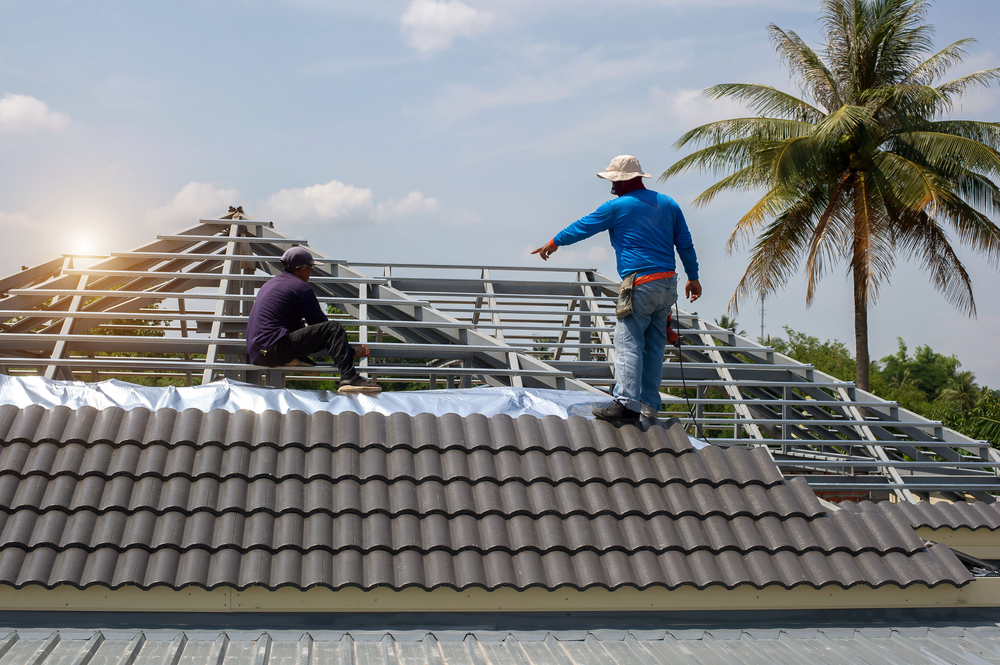
Navigating Your Roof Replacement: A Comprehensive Guide for Homeowners
Getting a brand-new housetop is never a whim but always a necessity. When it arises, most homeowners feel frustrated and have no idea what to start with. After all, it is a big-ticket project involving hundreds of nuances you need to consider.
Inadequate budgeting, unprofessional installation, and poor timing make for the main culprits of stress. If you want your upcoming project to become a worry-free experience, plan key moments beforehand. Such an approach allows you to correctly determine the new roof cost and manage your expenses more effectively. So, what do you need to pay heed to? Keep reading to discover.
How to Budget for a Roof Replacement Project
Re-roofing your home is a vital endeavor that requires a multi-thousand investment. If you’ve been stockpiling savings for a rainy day, it may feel like the one. But don’t rush to waste them all. First, you need to make a detailed budget plan covering your upcoming project’s large and small aspects. When doing so, you can get a more accurate roof estimate and eliminate unexpected expenditures and setbacks. Here are a few tips to follow when budgeting your roof replacement project.
Set Project Goals to Determine Its Scope
If you don’t plan to replace your housetop for aesthetic reasons but want to deal with leaks, it makes sense to schedule a professional inspection. They can assess your roof’s condition and determine the scope of work required to bring it back to a normal state. When you see the whole picture, you can set clear project objectives for your housetop replacement. It may turn out that patching up some roof sections can be enough to improve its functionality.
Scrutinize Material and Labor Costs
The roofing materials and labor costs will eat up the lion’s share of your budget. And comparing prices from different suppliers and contractors is a proactive move to cut expenses. You can scroll through manufacturer websites and stop by online retail stores. Moreover, the internet is brimming with open sources with actual cost data and local directories, not to mention specialized contractor-matching services you can use. The selected materials and experts should align with your project goals and budgetary constraints.
Consider Add-Ons You Might Need Within a Roofing Project
A housetop replacement can be a great chance to install long-desired skylights or solar panels. Or you may be willing to switch to architectural shingles to boost your home curb appeal. While these add-ons can change how your house looks and feels, they will also increase the overall cost of the project. Thus, you should weigh each option’s pros and cons to decide whether it is a must-have.
Plan for Removal and Disposal Costs
Many homeowners turn a blind eye to the fact that a new housetop installation is only possible after dismantling the old roof. Hence, you need to include tearing down the existing roofing material and its disposal into the project’s budget. This may involve renting a dumpster or hiring a waste removal company if the selected contractor doesn’t undertake this job.
Include a Contingency Budget
Even if you’ve scheduled an inspection and double-checked everything, there still can be room for unexpected expenses. That’s why keeping a contingency budget is a smart move. As a rule of thumb, it should equal at least 20% of the entire budget to cater to all possible add-ons.
Consider Financing Options
If the roof replacement cost doesn’t match your financial capabilities, don’t get disheartened too soon. There can be home improvement loans you can take advantage of. Or your contractor may offer you discounts or allow you to pay in installments. You should just ensure you understand interest rates and are okay with payback terms.
What is the Typical Budget Required for a Roof Replacement?

The cost of a new roof can vary significantly based on its size, the materials used, and the part of the country you live in. On average, American homeowners spend between $6.000 – $16.650 on roof replacement. The price includes both materials and labor.
However, if you set your heart on high-end roofing materials, like slate or copper, your expenses can be as high as $50.000. Installation of solar panels and other add-ons can skyrocket the total project cost even more. That’s why contacting different contractors for personalized estimates is recommended to ensure you get the best price possible.
What Steps Are Involved in the Process of Roof Replacement?
Whether you’ve decided to replace your current housetop after storm damage or 30 years of service, the project may seem formidable and overwhelming. Want to make it more accessible and less intimidating? There is a life hack – break the project down into steps. You can follow the next recommendations to complete your roof replacement with less hassle.
Initial Inspection
Whatever occasion has triggered you to replace the housetop, a thorough inspection is the first step to take. A licensed specialist can climb the roof and evaluate its current state, pinpointing any existing or soon-to-appear issues. Plus, they can estimate the scope of work and materials required to complete the project. By scheduling an inspection, you can keep unforeseen complications and enormous expenses at bay.
Roofing Materials Selection
Once the damage assessment is over, selecting roofing materials is the follow-up activity. You can consult your contractor, as they can pick up options suitable for your climate and roof slope. However, you need to specify your budget limitations and personal preferences on aesthetics to get a perfect match. The most widespread choices include asphalt shingles, metal, and tiles.
Old Shingles Removal
The old roofing material can be removed when everything is ready for a brand-new roof installation. Even if it is a partial replacement, your contractor must scrap off all old shingles to spot any rotten wood or leaks underneath. This can tighten up your roofing system, ensuring its problem-free performance in the future.
Roof Decking Preparation
When the old roof is torn off, it is necessary to prepare the decking. This step involves fixing damaged or rotten boards to create a smooth, solid surface. An adequately prepared roof deck allows you to avoid sagging issues. And it ensures your housetop won’t collapse under weighty loads and severe weather conditions.
Venting System Update
Ventilation systems play a vital role in preventing heat and moisture build-up in the attic, which can cause shingles to age prematurely and peel, not to mention mildew growth. If your housetop has any ventilation issues, it is the perfect time to address them.
Roof Flashing Installation
As edges, chimneys, and other decorative elements are considered weak spots of any housetop, paying particular attention to them is vital. Flashing involves sealing off all the areas prone to water leaks. This step ensures an enhanced level of protection against moisture intrusion.
New Shingles Installation
When the flashing is set in place, and the roof deck looks better than the other days, you can install new roofing materials. The process starts at the bottom of the roof and works upward. If you install shingles, each layer must overlap the row below to create a waterproof barrier.
Ridge Vent Installation
Proper housetop ventilation can be achieved by installing a ridge vent. It runs across the top of the roof’s peak and allows air to move freely under the roof. Thus, the likelihood of heat and moisture buildup is reduced to zero.
Add-Ons Like Installing Gutters and Water Shields
If your housetop’s functionality is your top priority, you can install additional elements like gutters and water shields to boost it. Not only can these add-ons help protect your property from water damage, but they can also enhance your home’s overall curb appeal.
Debris Removal and Clean-Up
The last step involves cleaning up the site. An established roofing company will undertake this job, too, removing any debris resulting from the roof replacement process and leaving your property neat and clean.
Final thoughts
When the necessity of roof replacement occurs out of the blue, you may feel despair and overwhelmed. Even though this project involves a lot of work and requires impressive investments, you can manage it.
This comprehensive guide can help you gain a better understanding of the roof replacement process. Remember that hiring a credible roofing contractor who upholds high professional standards every step of the way is already half the battle. So, you can start by searching for one.




